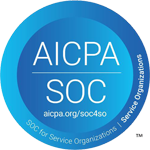Medicaid Requirements In New York
Medicaid is intended to ease the financial burden of paying for nursing home care and other long-term care services, which can be incredibly costly. However, gaining access to these benefits comes with several important requirements.
To receive New York Medicaid eligibility for seniors, applicants must be legal U.S. citizens or qualified non-citizens, reside within the state, and meet specific income and asset limits. Additionally, individuals must be at least 65, legally blind, or have a permanent disability to qualify for Medicaid coverage for nursing home care.
Medicaid Asset and Income Limit New York
New York's Medicaid long-term programs have different financial and functional eligibility rules that vary by marital status and can change annually. However, even if someone doesn’t meet the standard criteria, alternative paths to eligibility may be available.
Medicaid Income Limits in NY (2025)
The Medicaid income limits in New York, as of 2025, for seniors over 65 vary by marital status and program type. Outlined below is the Medicaid eligibility income chart that New York seniors can use to understand their qualifying income levels.
| |
Single
|
Married,
Both Applying
|
Married,
One Applicant
|
|
Institutional/Nursing Home Medicaid
|
$1,800 per month
|
$2,433 per month
|
$1,800 per month
|
|
Home and Community-based services (HCBS) Waivers
|
$1,800 per month
|
$2,433 per month
|
$1,800 per month
|
|
Aged Blind and Disabled Medicaid
|
$1,800 per month
|
$2,433 per month
|
$2,433 per month
|
In the case of Institutional/Nursing Home Medicaid, most of the recipient’s monthly income must go towards nursing home costs, except for a monthly $50 Personal Needs Allowance.
Most income sources are counted towards Medicaid’s income limits in NY, including wages, pensions, Social Security benefits, alimony, gifts, and IRA distributions. For married couples where only one is applying for Nursing Home Medicaid or HCBS Waiver, the non-applicant spouse’s income is not counted.
To prevent financial hardship, the non-applicant spouse is allowed a minimum monthly income, known as the Community Spouse Monthly Income Allowance (CSMIA), which is $3,948 as of 2025. If the non-applicant spouse’s income falls short of this, they can receive funds from the applicant spouse to reach the allowance limit.
However, if their income exceeds it, a portion may be directed to cover care costs unless the applicant spouse claims Spousal refusal. Both spouses’ incomes are considered for Regular Medicaid, and no CSMIA applies.
Medicaid Asset Limit In New York
The Medicaid asset limits in New York are outlined below:
Medicaid has a resource allowance of $31,185 for individuals applying, and $42,312 for a couple where both are applying.
There is a further allowance in the case of one spouse applying for Medicaid, with a maximum of $3,853 for the Monthly Maintenance Needs Allowance. This protects the non-applicant spouse from spousal impoverishment.
Common exempt assets in New York not counted towards Medicaid eligibility for long-term care in New York include the individual's primary residence, household items, personal belongings, and a vehicle. However, while a home is exempt, it can be subject to Medicaid estate recovery after the recipient's death to reimburse care costs.
When one spouse applies for Nursing Home Medicaid or HCBS Waiver, all of the couple's assets are considered jointly owned. However, Medicaid allows the non-applicant spouse (known as the community spouse) to keep a portion of the couple's assets through the Community Spouse Resource Allowance (CSRA).
In 2025, this amount is up to 50% of the couple's total assets, up to $154,140. If they both have under $74,820, the non-applicant spouse can keep up to 100% of that amount. These rules are critical to understand when engaging in Medicaid estate planning in New York, especially to protect the financial security of the non-applicant spouse.
Medicaid Asset Transfer Rules in New York
New York has a 5-year look-back period (60 months) for institutional Medicaid to review asset transfers. Any assets given away or sold for less than fair market value during this time may result in a penalty period. The New York nursing home Medicaid look-back period applies to both the applicant and their spouse.
The U.S. federal gift tax exemption does not apply to Medicaid. Even gifts under that threshold may violate Medicaid’s transfer rules if made during the look-back period.



